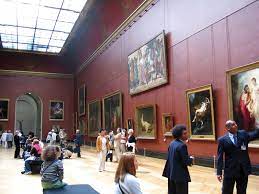Exploring The Cultural Treasures Of Africa: A Journey Through Its Museums.
Africa, a continent with a rich history, diverse cultures and a unique heritage, boasts an array of museums that offer a glimpse into its fascinating past, present, and future. From ancient civilizations to contemporary art scenes, Africa’s museums serve as custodians of its unique narratives, traditions, and contributions to the global cultural tapestry. In this essay, we will embark on a virtual journey through some of Africa’s most notable museums, celebrating their significance and the stories they tell.
One of the continent’s iconic museums is the Egyptian Museum in Cairo, Egypt. Home to an extensive collection of artifacts from ancient Egypt, including the world-renowned treasures of Tutankhamun, this museum is a testament to the grandeur and mystique of one of history’s greatest civilizations. Visitors can marvel at intricately carved statues, ornate jewelry, and well-preserved mummies, gaining insights into the religious beliefs, artistry, and daily life of the ancient Egyptians.
Moving westward, we encounter the Museum of African Art in Dakar, Senegal. Founded by the celebrated Senegalese artist and poet Leopold Sedar Senghor, this museum showcases a rich assortment of traditional and contemporary African art forms. From traditional masks and sculptures representing diverse cultural traditions to modern paintings, photographs, and installations that reflect Africa’s evolving artistic expressions, the museum is a vibrant hub of creativity and cultural dialogue.
In South Africa, the Apartheid Museum in Johannesburg stands as a poignant reminder of the country’s tumultuous history of racial segregation and struggle for freedom. Through immersive exhibitions, multimedia displays, and personal narratives, the museum chronicles the apartheid era, highlighting the resilience of the human spirit and the triumph of justice and reconciliation.
Further north, in Nigeria, the National Museum in Lagos offers a comprehensive journey through the country’s rich heritage. From ancient Nok terracotta sculptures and Ife bronze heads to traditional textiles, musical instruments, and royal regalia, the museum showcases the diversity and artistic achievements of Nigeria’s many cultures, past and present.
Crossing the continent to Kenya, we encounter the Nairobi National Museum, a cultural gem nestled in the heart of the capital city. This museum not only features exhibits on Kenya’s natural history, wildlife, and geological wonders but also celebrates its cultural diversity through displays of traditional artifacts, archaeological finds, and contemporary art installations. Beyond these well-known institutions, Africa is dotted with numerous regional and community museums that play vital roles in preserving local histories, traditions, and identities.
From the Gaddafi National Mosque Museum in Uganda to the National Museum of Burkina Faso, from the Ethnological Museum of Addis Ababa University in Ethiopia to the National Museum of Mali in Bamako, each museum offers a unique window into Africa’s multifaceted heritage.
In conclusion, Africa’s museums are not merely repositories of artifacts and artworks; they are living narratives that bridge the past, present, and future. They inspire curiosity, foster understanding, and celebrate the rich tapestry of cultures, beliefs, and experiences that define the continent. As we navigate the complexities of our globalized world, these museums serve as beacons of cultural pride, resilience, and creativity, inviting us to embark on a journey of discovery and appreciation for Africa’s enduring legacy.

